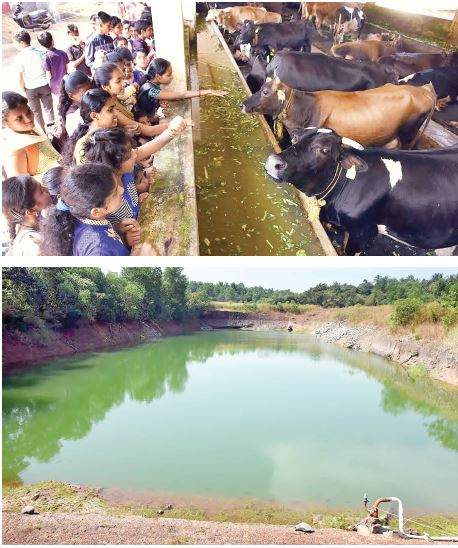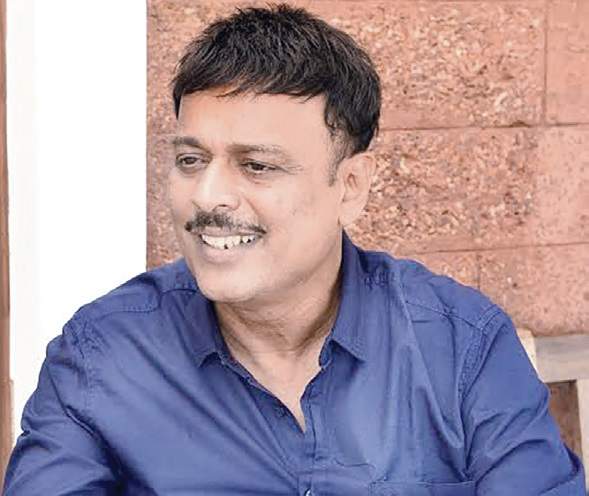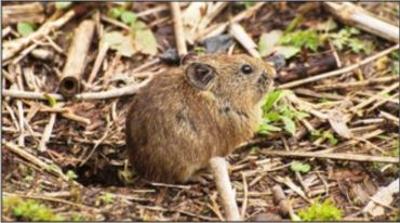by Ambika Nagaraj
Tranquil homes with dream gardens as focal points with trails of green and bursts of colour graciously welcoming you are instant charms your eyes would love to feast on, isn’t it? There is perhaps no view more delightful than facing such lush green artistry.
Today, we introduce you to people who are into decorating the green space at their beautiful homes in city for not just one or two but for over years and decades with the same spirit and fervour which deserves all the admiration. While many of them have been constantly taking part in the Dasara Best Home Garden contest since years and consecutively winning prizes for their efforts, a few others have been into it the same way too, irrespective of their participation in the competition that the Department of Horticulture organises as part of the festival each year.
Read out to know how their passion has been driving them towards turning that dream space at home into a magical yard …
Shyamala Prasanna

Can you imagine being rewarded for maintaining a beautiful garden at home for not five or ten but a whopping 21 consecutive years? Yes, this lady has done it. Such is her dedication that weather she will be in town during the festival or has plans to travel elsewhere, she ensures the green space at her home is decorated well within the stipulated time with such perseverance.
Shyamala Prasanna, a resident of Lakshmipuram has a beautiful and specious garden at home that’s all of beautiful plants, shrubs, herbs, bonsais and more, each one unique from the other. Though according to Shyamala this green space always remains neat, it is specially decked up during the Dasara festival each year. “I started participating in this contest conducted as part of the Dasara festival about 21 years ago,” gushes Shyamala in excitement, “the Department of Horticulture conducts many contests as part of Dasara each year and this one has been my choice ever since it first started as I love plants. I have decorated the garden with different themes, adding new plants of new verities decked up with colourful toys and dolls every time.”
In Shyamala’s garden, one can find plants of over a hundred different verities, which include artistically made bonsais, vibrant flowering plants, cacti, ornamental plants, different types of foliages, and a well maintained lawn. “Apart from the plants, I have some permanent ornamental items which add a lot of weight to my green space. The main among those are the permanently set up waterfall and the swing which almost all my visitors love. And then comes my bonsai collection. I have made bonsai like the ages old Christmas and Banyan trees, fruit bearing trees such as those of sapota, orange, lemon and cherry, many flower bearing trees such as gulmohar and bougainvillea to name a few, which look very pretty and are very special to me,” she adds.
And during Dasara each year, Shyamala decorates her garden with different themes using dolls and idols, which add an extra zing to her special space at home. “I have a set of dolls that I arrange and rearrange differently with a unique theme every Dasara. This year, the specialities are the Rajasthani desert, the temples of South India, China Town, ‘Winter Wonderland’ around my Christmas tree bonsai, a section representing Peru around my bonsais, an area resembling the zoo with toys of animals like those present in the Mysore Zoo, the Dasara theme based dolls, the colourful terracotta dolls like frogs and swans around the water based plants to name a few” she explains. “And a verity of bonsai called Penjing is where we create decorative landscapes upon a tray. This year I have done the same on a tray hand made by me that I learnt during a workshop which adds extra value.” “And I place several toys, dolls, colourful stones and decorative items all over the garden accordingly”, he adds. And she has a special collection of decorative items that she carefully preserves and uses only during Dasara to decorate the garden.
What’s more, she also has a section dedicated to kitchen gardening where she grows a few plants that turn out to be useful for her in cooking.
Do we even need to be astonished that she has been constantly rewarded for her dedication towards her passion?
_____________________________________
Suma Krishna

Suma is one enterprising lady in Mysuru for whom her garden is her soul. So the moment you pass by the front yard of the green space at her home you will feel truly welcomed. And the same has been winning her the first place in the big home garden category from the past 27 years constantly and her efforts prove that she deserves it every bit.
Suma Krishna is a resident of Kuvempunagar who has been gardening at home since almost 30 years now. “Wherever I go, especially when on trips and tours, all that keeps constantly running in my mind is nothing but my garden and dolls that I can purchase and decorate” she grins, humbly showing off the collection of plants and hand-picked dolls from places across the globe.
“While garden decoration has been my hobby, I began taking part in the Dasara contest ever since it was started and have been winning the rolling shield each time,” she explains, She has decorated her garden with extreme vibrancy choosing every plant and using every bit of the decorative piece carefully. Having grown everything ranging from fruits to vegetables and bonsai to a wide variety of flowering and decorative plants, the speciality of her garden lies in the fact that she prepares her beautiful garden for the contest all by herself with least help from her gardener.
“I start preparations for my garden about four months before the contest begins and sow seeds, planning things according to the time they take for cultivation, as each plant takes its own time to grow rightly by the time of the contest,” says Suma.
“While the garden is well-maintained all through the year, I add decorative trinkets, toys and dolls during Dasara. That apart, I also reuse the broken pots, dry and dead wooden trunks and any unused product that can be recycled and used in my garden by painting or curing them and reusing them to plant saplings, make bonsai or simply decorate them to suit my garden,” she explains, showcasing a few examples for her work. “My garden looks more vibrant throughout Dasara,” she says, even as she walks past another corner of the yard and opens the doors to showcase her kitchen garden from where she gets to pluck for home, things like coriander, pudina, a few variety of vegetables, fruits and more.
Lastly, the trail ends with that space of her home which is full of tall trees where parrots, sparrows and many varieties of colourful birds arrive to either take shelter or and rest a while before they fly away to relish the delicious figs hanging from the tall fig tree, that the family can blissfully watch through the glass panes from the dining area within, admiring the beauty of nature in leisure.
__________________________________
Prabha Subramanya

Do you feel a small yard means you can’t have the garden like you want at home? But Prabha can prove you wrong. As a majority of the ground space at her home has been used up for construction, the creative lady has decided to deck up the terrace atop the building, making it the most beautiful part of her gorgeous home.
With this, she has not just maximised the space for home gardening but has also been winning a prize under the terrace garden category consecutively since the last eight years now.
Prabha Subramanya is another zealous gardener residing in Vijayanagar who is an avid Bonsai aficionado. She first began bonsai gardening at home about 20 years ago, to learn which, she attended classes back then. And the lady’s passion is such that, every bit of the bright terrace at her home is now a feast to one’s eyes, filled up with over 80 varieties of plants, each one made to look unique and livelier than the other by her.
“It’s a live art like no other art on earth so no wonder any one would find it as attractive,” says Prabha, “For, though preparing a bonsai is a task full of difficult procedures, we tend to magically indulge in doing everything associated with it from pruning, re-potting, trimming, cleaning and fertilising the plants with happiness. And, especially with flowers and fruits grown upon them, they are the prettiest things any one would ever see.”
Prabha has been winning a prize under the Terrace Garden category since the last seven years and that’s when she actually first began participating in the event. “Though I attended classes 20 years ago, I wasn’t too sure about taking part in the Dasara contest as I didn’t have plants worth a display those days. It is only since the last eight years that I have had a good collection of different varieties and since then, I have been taking part in the contest and winning the first place. However, as my gardener helps me equally in the maintenance, I always send him to collect the prize,” the modest lady says.
The bonsai types Prabha has made include: Maple, Kengai (cascade bonsai), Hokidachi (broom style), Han-kengai (semi cascade), Sokan (double trunk style), Kabudachi (multi trunk style), bonsai landscape and many more.
“It is an art that requires constant attention and dedication. But once we get involved, it is an ongoing process. We keep coming up with the ideas of making new varieties. I need to spend a minimum of one hour on my terrace each day. And I start my focus on the garden about four months before the contest begins. The live art is such a passion that it keeps me going,” she asserts.
___________________________________
Padmakumar & Rohini

Dr. P.D. Padmakumar, a resident of the city and ardent gardening connoisseur didn’t participate in the Dasara contest this season. He was on a tour to the US during the time which came as a hindrance for participation he says. But for the veteran enthusiast, maintenance and decoration of his garden doesn’t mean special only during the festival. “My garden is well taken care of, though I do not participate in the contest. However, I have taken part for the last 11 years and won prizes continuously, which is a very special feeling,” says he.
The retired Joint Director, Department of Animal Husbandry, who spends a lot of time in decking up the green space at home says it has been passion not just for him for his wife Rohini Padmakumar too. “We plant, decorate and look after our garden together as it’s not just mine but my wife’s passion too,” the Veterinarian explains.
And ask him as to how such a busy man developed an interest in gardening and pat comes the reply “It wasn’t a sudden desire to indulge in gardening. I always loved it and during my services I got to travel and stay in many different places but the homes we stayed in lacked sufficient space for gardening though we would try to decorate as much as we could. Hence, once we came to own house here where we have sufficient space for gardening, we began planting all that we like.”
The chief focus of the doctor’s house is on kitchen gardening. “It’s a great feeling when we get to grow our veggies, pluck them fresh and cook for food. We have so many varieties fresh greens and vegetables all organically grown,” he says adding “we have over 30 varieties of plants and the kitchen section includes plants like mint, amruthaballi, doddpatre, curry leaves, aloe Vera, beetle, tulasi, pumpkin and papaya to name just a few.”
Such is their love for the lively lush greenery at home that the couple even produce vermi compost in their garden space to create a heterogeneous mixture of decomposed vegetable or food waste, bedding materials, and vermicast to make an excellent, nutrient-rich organic fertiliser for the plants in their garden.
Now who wouldn’t want to evade in a yard so full of lushness so enchanting?
________________________________________
source: http://www.starofmysore.com / Star of Mysore / Home> Feature Articles / October 08th, 2016









